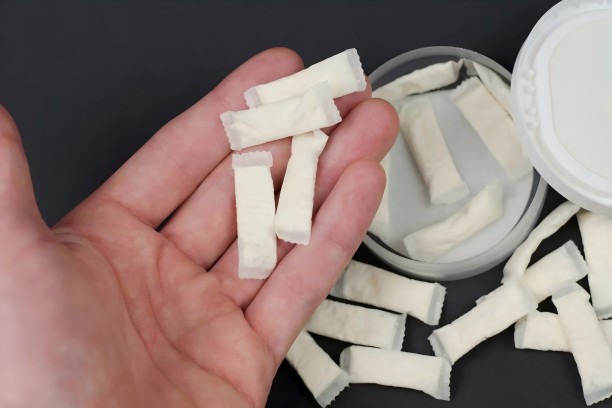Imagine yourself walking down the bustling streets of a European city. The scent of freshly brewed coffee wafts through the air as people rush past, cups in hand, getting ready for another busy day. Something catches your eye, though. There’s a surprising absence of cigarette smoke. Instead, you see people inserting tiny, discreet pouches under their lips—nicotine pouches.
It’s interesting how these small pouches have quietly worked their way into daily life, even in countries that were once very skeptical. Why the change? Well, it’s a mix of new public health initiatives, evolving laws, and changing consumer habits. Let’s explore what’s behind this shift.
Public Health Policies: A New Approach to Harm Reduction
For years, nicotine products were treated like traditional cigarettes—viewed with a high level of suspicion, and often banned. Governments had every reason to be cautious; decades of cigarette smoking had led to untold public health problems. But then Sweden came along and tried a different approach.
Sweden turned to snus, a smokeless tobacco product, and found that it significantly lowered smoking rates. When nicotine pouches showed up, they seemed like an even cleaner, more advanced version. No smoke, no tobacco—just nicotine. It worked. Now, only about 7% of Swedish adults smoke, and many point to nicotine alternatives as a major reason behind this change.
This kind of success made other countries, like Norway and Denmark, reconsider their approach. If nicotine was separated from the harmful chemicals produced by burning tobacco, the conversation changed entirely. Offering a safer option made sense, and people started viewing nicotine pouches as a real way to reduce the harm of smoking.
Regulation Adjustments: Striking the Right Balance
Initially, nicotine pouches were in a bit of a gray area. They were often treated like snus or other smokeless tobacco products, making it unclear how they should be regulated. Many governments didn’t know what box to put them in, which left consumers confused.
But the landscape changed. Governments in countries like Denmark and the Czech Republic decided it was time for clearer guidelines. They allowed nicotine pouches to be sold, but with controls in place. For instance, the European Union put a limit on how much nicotine could be in each pouch—20mg, to be precise. This way, they kept the products available but regulated their potency.
Regulation instead of prohibition has made all the difference. When a product is regulated, you have oversight, quality control, and, ideally, a safer consumer experience. Outright bans often push people towards unsafe, unregulated alternatives, but this approach gives smokers a less harmful option.
Consumer Appeal: Health and Convenience

Think of the smoker standing in a crowded Berlin café, itching for their nicotine fix but unwilling to brave the cold or deal with the judgmental stares outside. With nicotine pouches, they don’t have to. It’s discreet—no smoke, no lingering smell, and no stepping outside. It’s this convenience that has fueled the popularity of nicotine pouches.
In big cities like Berlin, strict smoking laws make it nearly impossible to smoke in many public places, like parks or restaurants. Nicotine pouches have provided a solution—letting people continue their habit without breaking the rules or facing societal backlash. It’s no wonder they’re becoming so popular.
The story is similar in Norway. Between 2020 and 2022, the number of people using nicotine pouches doubled. On a busy commuter train or in a long meeting, nicotine pouches have become a go-to, blending effortlessly into people’s daily routines. They’re almost as much a part of life now as that cup of morning coffee.
Flavor and Innovation: Catering to Young Professionals
Nicotine pouches also bring something different to the table—flavor. Unlike traditional tobacco products, which are often harsh and unpleasant, nicotine pouches come in a variety of flavors, like mint, citrus, or even tropical blends.
Companies like British American Tobacco and Philip Morris International have really leaned into this, investing in research to create exciting flavor options. It’s about more than just nicotine; it’s about an experience. Young professionals want variety and personalization, and nicotine pouches provide that in a way that cigarettes never did. Flavors like “citrus burst” and “iced mint” are particularly popular among those who want a refreshing, modern take on nicotine consumption.
Governments See the Financial Benefits
Governments are also starting to see the upside of nicotine pouches. As cigarette tax revenues drop, there’s a need for new income streams. Countries like New Zealand, which once banned most tobacco alternatives, are rethinking their policies. Not only do nicotine pouches bring in new tax revenue, but they also help reduce healthcare costs by lowering the rate of smoking-related illnesses.
Switching from cigarettes to pouches means fewer cases of lung cancer and heart disease, which saves money on healthcare and makes for a healthier population. It’s a win-win that’s hard to ignore.
Safety and Regulatory Concerns
Of course, nothing is entirely risk-free. Nicotine pouches still contain nicotine, which is addictive. For groups like pregnant women or people with certain health conditions, they’re not recommended. But compared to smoking, they’re a much safer bet. Removing tobacco smoke takes away most of the harmful chemicals that lead to serious health problems.
Regulatory bodies have stepped in to ensure safety—limiting nicotine content, requiring clear labeling, and placing restrictions on marketing. The goal is to give people a safer alternative while making sure they understand the risks involved.
Studies have shown that nicotine pouches substantially reduce exposure to harmful chemicals compared to smoking. If used responsibly, they could be a real tool for reducing smoking rates and improving public health.
Conclusion: A Shift in Perception
Countries that once resisted alternatives to smoking are now seeing the value of nicotine pouches. They represent a cleaner, more convenient way to use nicotine—one that doesn’t involve smoke or tar. With smart public health policies, innovative product designs, and sensible regulations, nicotine pouches have become a real player in the harm reduction game.
This isn’t just a fleeting trend. As the world moves away from cigarettes, nicotine pouches might be part of a future where nicotine is consumed without the dangers of smoke.
Sources:







